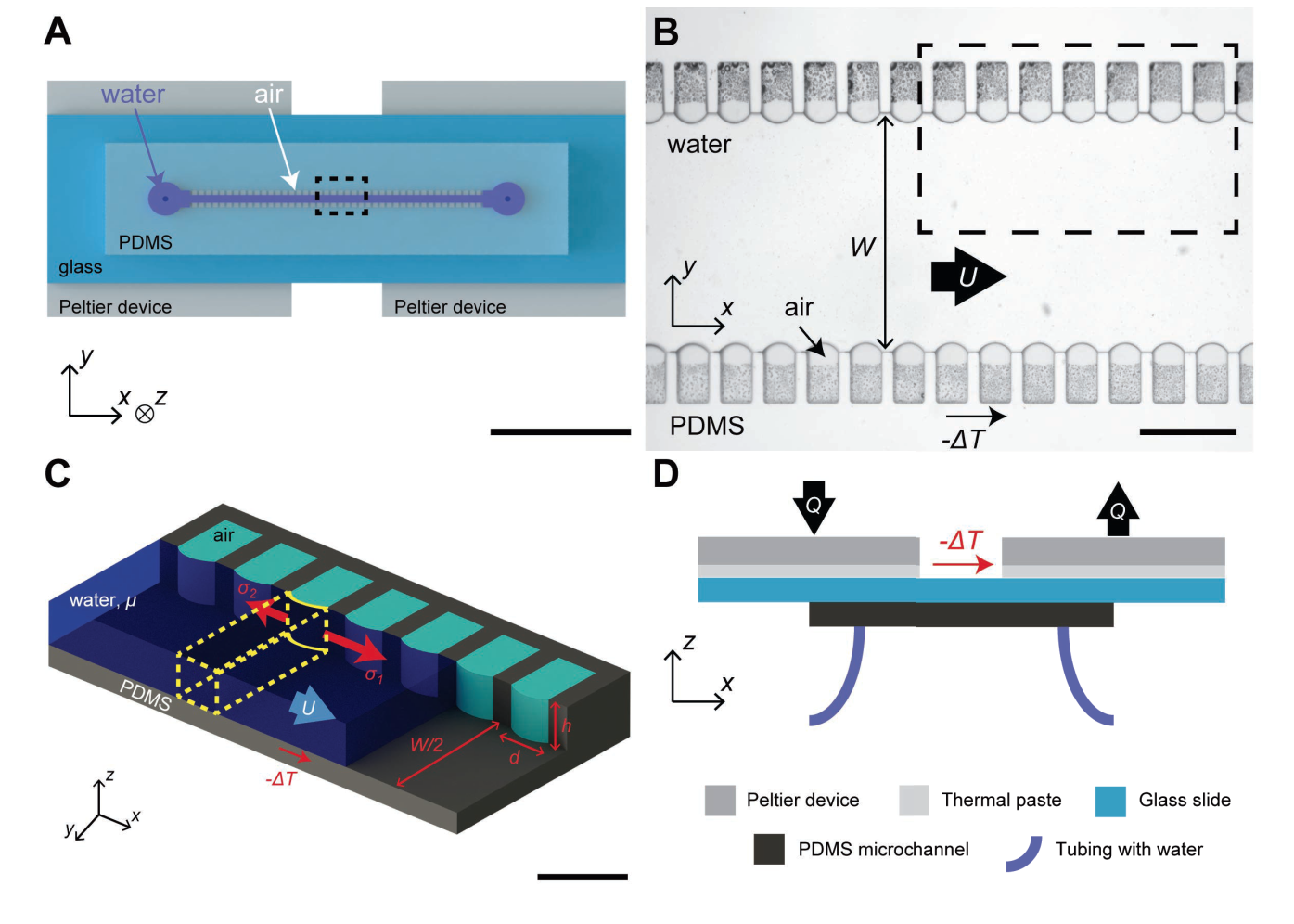
Design concept for thermocapillary-driven microfluidic channels.
Surface tension gradients induce Marangoni flow, which can be exploited for fluid transport. At the micron scale, these surface-driven flows can be quite significant. In this project, we use surface tension gradients to drive bulk fluid flows by introducing fluid-fluid interfaces along the walls of microfluidic channels. The gradients are induced through thermal energy, exploiting the temperature dependence of a fluid-fluid interface to generate thermocapillary flow. We designed a biocompatible thermocapillary microchannel capable of being powered by solar irradiation. We demonstrated the ability of the system to replace bulky peripherals, like traditional syringe pumps, on a diagnostic microfluidic device that captures and detects leukocyte subpopulations within blood. In short, thermocapillary-driven microfluidic devices could be implemented for clinical assays at the point of care without the use of electricity.
The image above shows the design concept for thermocapillary-driven microfluidic channels.
(A) Schematic of the entire microfluidic channel with air pockets trapped along the side walls. The dashed rectangle represents the region depicted in (B).
(B) Microfluidic channel filled with water and air trapped all along the wall. The dashed rectangle represents the region depicted in the schematic in (C).
(C) Schematic of the inside of a microfluidic channel with water (blue) and air pockets (cyan). The dimensions of the cavities and channel are labeled.
(D) Schematic of the experimental setup with heating and cooling Q via thermoelectric (Peltier) modules. Scale bars represent (A) 10 mm, (B) 300 µm, and (C) 200 µm.
